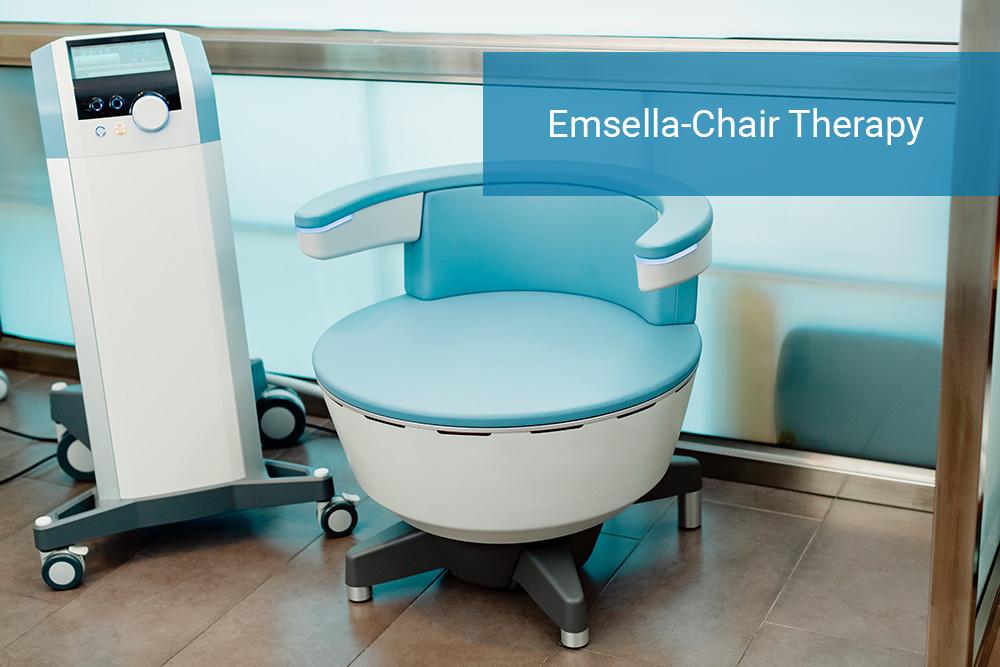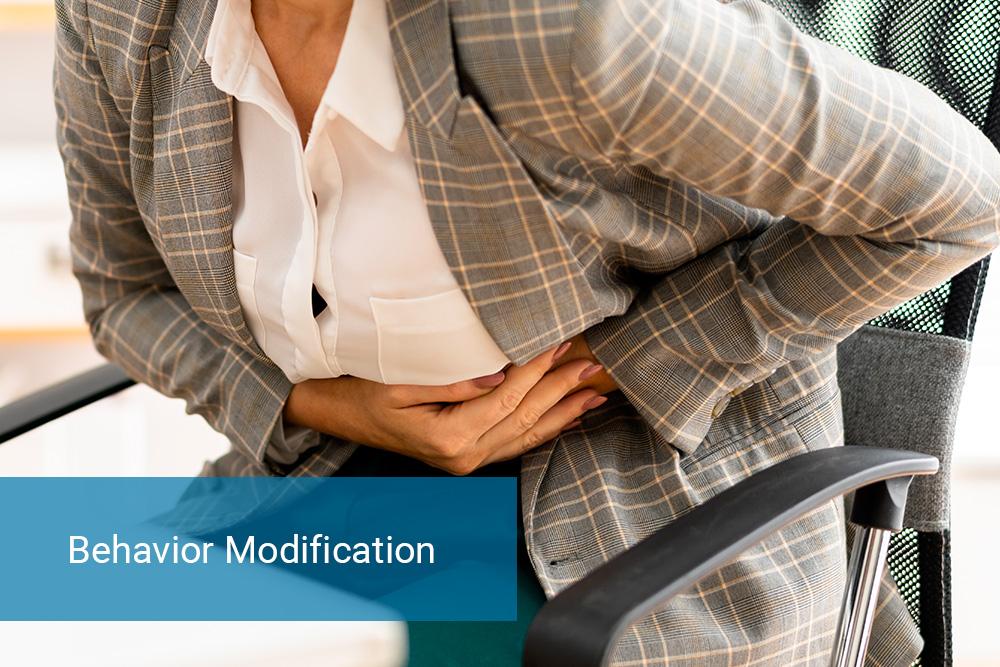
Urinary incontinence, abbreviated as UI, is described as the unintentional release of urine and can happen for a variety of reasons. While causes include injury and illness, UI is often just a result of the pelvic floor muscles becoming weaker as part of the natural aging process. Incontinence is much more than a physical condition. If left untreated, the embarrassment of UI can often result in psychological problems such as stress, anxiety, and even depression. However, researchers say the reverse is also true, as incontinence can be exacerbated by stress and other mental health issues.
A 2006 study published in the British Journal of Health Psychology investigating the relationship between anxiety, depression, and incontinence found over 50 percent of women with incontinence reported experiencing bouts of anxiety, and almost 40 percent reported having depressive episodes before they became incontinent. A similar 2015 study examined over 12,000 women at least 40 years of age and also found a strong correlation between stress and the severity of bladder symptoms.
In a properly working urinary system, the kidneys filter water, salts, and impurities from the blood into the bladder. As the bladder fills and expands, it gets to a point where it triggers the urge to urinate. A muscle called the urethral sphincter prevents the bladder from emptying until you consciously release the urine. However, one of four types of urinary incontinence can occur when control of the sphincter muscle becomes compromised.

Types of Urinary Incontinence
- Stress incontinence is the most common type of incontinence and is seen much more frequently in women than men. This type of UI is not named for it being caused by psychological stress but as the result of some physical stress that places excess pressure on the pelvic muscles. This stress includes simple everyday activities such as lifting or carrying a heavy object, coughing, sneezing, and even laughing. Sometimes, standing up from a sitting position may cause urine leakage. Any rigorous exercise or high-impact activities that pressure your bladder, such as running, weight training, carrying heavy boxes, moving furniture and even engaging in sexual intercourse, can bring on an episode.
- Urge incontinence is a sudden intense need to urinate followed by an involuntary loss of urine. This can be caused by something as simple as a mild infection or as serious as a chronic disease. Urge incontinence also often causes the need to urinate frequently, including throughout the night, and is the type of UI most commonly found in men with prostate issues.
- Functional incontinence results from some form of illness or disability, such as arthritis, that prevents you from making it to the bathroom before leakage occurs.
- Overflow incontinence occurs with the urge to urinate, but only a small amount of urine can be released. This is typically the result of a weak bladder muscle or blockage preventing the bladder from fully emptying. This often causes frequent, sometimes constant, urine dribbling accompanied by the urge to urinate.

How Incontinence Creates Stress
Depending on the severity of the condition, both the physical and mental aspects of incontinence can cause you to restrict your interactions with family and friends, isolate yourself, and even lead to the loss of livelihood.
- Limited Social Interaction
Losing control of your bladder can result in embarrassment that is severe enough to make you want to limit your social interactions, keeping you from attending events, parties, and holiday gatherings.
- Isolation
The embarrassment incontinence causes can become so severe you may feel the need to completely isolate yourself. Severe cases can result in you not even wanting to leave your own home, restricting everything from just going shopping to taking a vacation for fear of not being able to get to a bathroom before you lose control.
- Financial Issues
The embarrassment of incontinence can result in the loss of time at work and even cause you to quit your job or work reduced hours which can lead to financial difficulties.
Understandably, any of these situations can result in an enormous amount of emotional stress that can cause you to experience anxiety and even lead to depression if not addressed. The good news is there are therapy options that can help you reduce the stress associated with UI, and vice versa, and regain control of your bladder and your life.
Incontinence Treatment Options
Non-invasive therapeutic options should always be tried before resorting to more aggressive techniques like medications and surgery. The successful treatment of urinary incontinence will not only reduce the associated stress that incontinence causes, but it can also give you back your confidence and freedom. The two most effective non-invasive treatment options for incontinence consist of behavior modification techniques and strengthening of the pelvic floor muscles that control bladder function.

Behavior Modification
- Weight Loss: Obesity is one of the biggest risk factors for developing some types of UI, as the extra weight places more pressure on the bladder and the supporting muscles. Getting adequate amounts of exercise and eating a healthy diet with lots of fresh fruits, vegetables, fish, and lean meats will help you lose weight.
- Smoking: Unless you have been living in a cave in the mountains for the past four decades, you already know smoking is bad for your heart and lungs. However, the chemical compounds in cigarette smoke are also known to lead to UI by causing muscle atrophy.
Kegel Exercises
Named for the gynecologist who invented the treatment option, Arnold Kegel, MD, Kegel exercises were the first effective form of urinary incontinence therapy. Kegel exercises are designed to strengthen the pelvic floor muscles to give you better bladder control and have the added advantage of enhancing sexual desire and pleasure. Kegels are isometric exercises performed by contracting the pelvic muscles for a few seconds, releasing and repeating the sequence. However, if not performed properly, isometric exercises have the potential to do more harm than good, so be sure to get proper instruction before trying this at home.
Emsella-Chair Therapy
A relative newcomer to the incontinence therapy group of options, Emsella is a safe, effective, and FDA-cleared non-invasive therapy for incontinence. Created by aesthetics manufacturer BTL and standing for “electromagnetic chair,” Emsella is designed to stimulate the pelvic floor muscles into performing the equivalent of 11,000 Kegel exercises in just one 28-minute session.
The non-invasive Emsella-treatment option allows you to remain fully clothed while you sit comfortably upright in a chair. You will feel a mild tingling sensation as the harmless electromagnetic waves penetrate your pelvis and stimulate all the pelvic-floor muscles. Emsella requires no recovery time and has been shown to be effective in both men and women for helping to restore bladder control and improve sexual function and desire.

While researchers admit the causes of urinary incontinence aren’t fully understood, clinical studies have shown maintaining good mental health can help control incontinence. Additionally, having good physical health is proven to improve your overall mental well-being. Wellness studio Be Still Float offers Emsella pelvic floor therapy in Jacksonville, Florida, as well as a host of other wellness treatment options, such as massage and float therapy. Contact Be Still Float at 904-593-2458 or visit them online at BeStillFloat.com to learn more about Emsella or to schedule an appointment or consultation.












